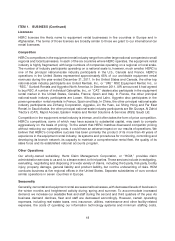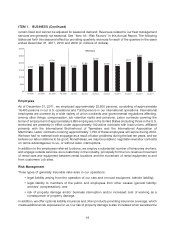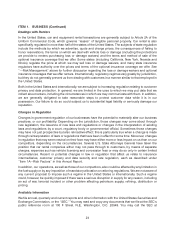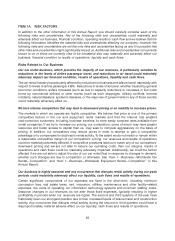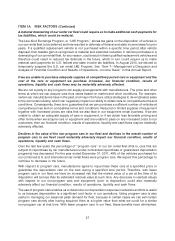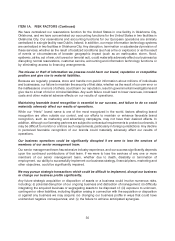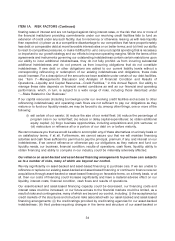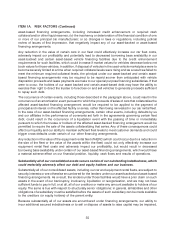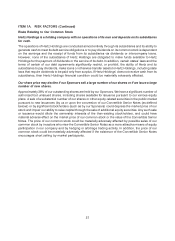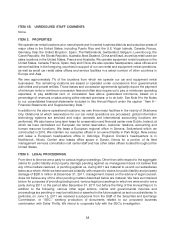Hertz 2011 Annual Report Download - page 54
Download and view the complete annual report
Please find page 54 of the 2011 Hertz annual report below. You can navigate through the pages in the report by either clicking on the pages listed below, or by using the keyword search tool below to find specific information within the annual report.ITEM 1A. RISK FACTORS (Continued)
Accordingly, we are now bearing increased risk relating to residual value and the related depreciation on
our car rental fleet and our flexibility to reduce the size of our fleet by returning cars sooner than originally
expected without the risk of loss in the event of an economic downturn or to respond to changes in rental
demand has been reduced.
The failure of a manufacturer of our program cars to fulfill its obligations under a repurchase or
guaranteed depreciation program could expose us to loss on those program cars and materially
adversely affect certain of our financing arrangements, which could in turn materially adversely
affect our liquidity, cash flows, financial condition and results of operations.
If any manufacturer of our program cars does not fulfill its obligations under its repurchase or guaranteed
depreciation agreement with us, whether due to default, reorganization, bankruptcy or otherwise, then
we would have to dispose of those program cars without receiving the benefits of the associated
programs (we could be left with a substantial unpaid claim against the manufacturer with respect to
program cars that were sold and returned to the manufacturer but not paid for, or that were sold for less
than their agreed repurchase price or guaranteed value) and we would also be exposed to residual risk
with respect to these cars.
The failure by a manufacturer to pay such amounts could cause a credit enhancement deficiency with
respect to our asset-backed and asset-based financing arrangements, requiring us to either reduce the
outstanding principal amount of debt or provide more collateral (in the form of cash, vehicles and/or
certain other contractual rights) to the creditors under any such affected arrangement.
If one or more manufacturers were to adversely modify or eliminate repurchase or guaranteed
depreciation programs in the future, our access to and the terms of asset-backed and asset-based debt
financing could be adversely affected, which could in turn have a material adverse effect on our liquidity,
cash flows, financial condition and results of operations.
We may not be successful in implementing our strategy of further reducing operating costs and our
cost reduction initiatives may have adverse consequences.
We are continuing to implement initiatives to reduce our operating expenses. These initiatives may
include headcount reductions, business process outsourcing, business process re-engineering,
internal reorganization and other expense controls. We cannot assure you that our cost reduction
initiatives will achieve any further success. Whether or not successful, our cost reduction initiatives
involve significant expenses and we expect to incur further expenses associated with these initiatives,
some of which may be material in the period in which they are incurred.
Even if we achieve further success with our cost reduction initiatives, we face risks associated with our
initiatives, including declines in employee morale or the level of customer service we provide, the
efficiency of our operations or the effectiveness of our internal controls. Any of these risks could have a
material adverse impact on our results of operations, financial condition, liquidity and cash flows.
An impairment of our goodwill or our indefinite lived intangible assets could have a material
non-cash adverse impact on our results of operations.
We review our goodwill and indefinite lived intangible assets for impairment whenever events or changes
in circumstances indicate that the carrying amount of these assets may not be recoverable and at least
annually. If economic deterioration occurs, then we may be required to record charges for goodwill or
indefinite lived intangible asset impairments in the future, which could have a material adverse non-cash
impact on our results of operations.
28


